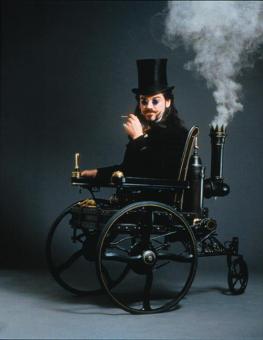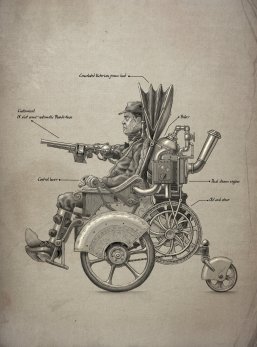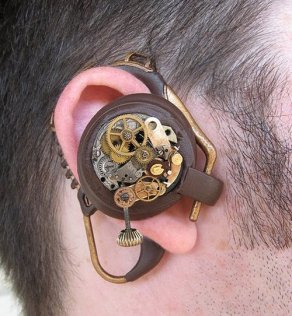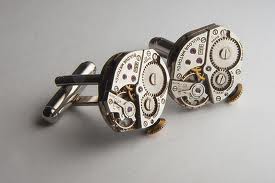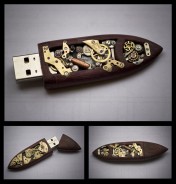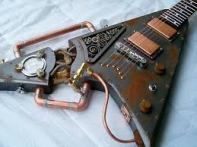Firstly I must say that I absolutely love this genre of design. As a way of inspiring and influencing students to think creatively with their design work it is brilliant. They have to:
- Explore design and product history fully to understand
- Make creative decisions about the mix of aesthetics and technology
- Look carefully at the amalgam of materials and manufacturing methods
- Be aware of the need for combining form and function in their work
- Provides for some really cool sketch, concept and graphics work
What more do you need?
I first became aware of SteamPunk as a consequence of watching some very entertaining (in my opinion) films – ‘Mad Max’, ‘The League of Extraordinary Gentleman‘, ‘The Wild, Wild West‘ and the ‘Fifth Element’ to name a few.
But what is SteamPunk exactly?
The genre seems to have originated during the 1980s and includes key design elements and influence from the areas of sci-fi, fantasy and history. My design students have taken a lot of influence from the genre, and have used that influence successfully in their A-Level design work, but trying to hang a summative phrase to sum up the movement is not easy.
Having trawled ‘t’interweb’ and looked in some books the best single phrase that sums up SteamPunk design for me is this:
‘What the 21st century thinks that the Victorians thought the 21st century would be like’
There is no doubt that the opportunity to design products that embrace this genre facilitates that ‘creative juice’ flow. Kids get it; they run with it and, to a certain extent, are not constrained over and above the historical context.
The opportunity to explore an eclectic range of traditional materials in their work (copper, brass, steel, wood….but remember NO plastics other than to create models that represent the genre 😉 ) means any manufacturing work that you do supports the theory with regard to design and making, using tools, machines and processes to fabricate their idea. Guys and girls are all motivated (jewellery, transport, fashion, tech products…) can all be tackled.
If you are looking for a starting point to kick off a project then SteamPunk is a massively fun and creative way forward.
No links to key sites on this blog entry – Google is your friend. Go and have a look.
You’ll be inspired.


